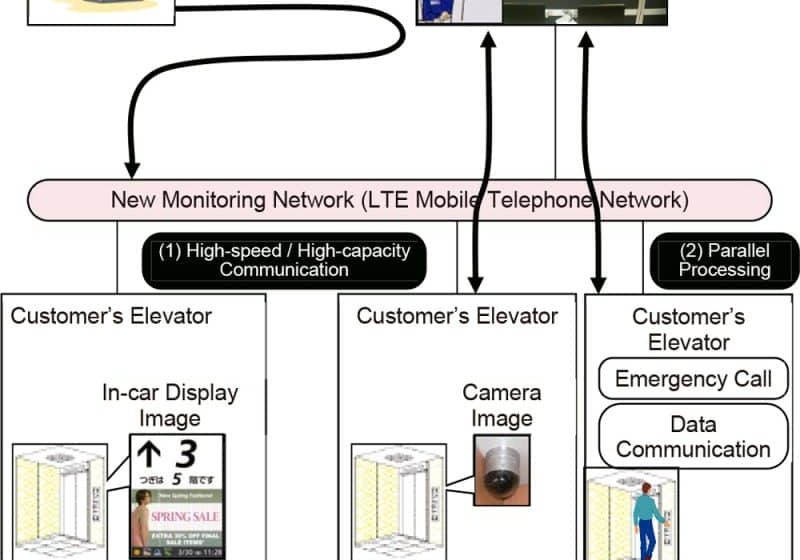Products like low-friction bearings can extend the life of conveyors and lifts and boost sustainability.
December 2015’s Paris Climate Conference, also known as “COP21,” proved that politicians are capable of coming to agreement on important issues. While they can be commended for their diplomatic skills, the hard work of implementing environmental targets will largely be down to industry.
SKF’s Director of Corporate Sustainability Rob Jenkinson recently said that the materials-handling industry, which includes elevators, will need to “roll up its sleeves and plot a way forward” in putting these commitments into practice. This needs to begin straightaway, by investing in lower-carbon technologies and addressing specific sustainability needs. Each part of the industry is very different but has similar underlying sustainability concerns, such as boosting energy efficiency, extending service life and implementing proper lubricant disposal.
Grease Disposal
At one time, lubrication grease was simply disposed of, but, now, it must be recycled. This, however, is not so easy to perform. For this reason, there is a concerted effort to cut the use of grease in applications such as lifts, conveyor pulleys and cranes. Less grease means less disposal, which ultimately means less pollution.
One solution is to use bearings that do not need re-lubrication. In bearings with solid oil, the lubricating oil leaves the oil-saturated polymer material on the bearing raceways. The part is then lubricated for life, which has the added advantage of cutting the need for maintenance operations.
In heavy-conveyor applications, another popular way to solve the problem is to use a “three barriers” solution consisting of a housing with a seal, a sealed bearing, and grease filled in the space between the bearing and housing seal. The solution has environmental benefits, since the use of grease is significantly lower, because purging the bearing clean with grease becomes unnecessary. The bearing itself needs small quantities of grease to function. Furthermore, the bearing’s life is significantly improved, because it is working in a protected and clean environment. In a conveyor pulley, this means the life of the bearing system is longer or equal to the lagging on the pulley and thus no longer a bottleneck.
Added Efficiency
A far more pressing concern is energy efficiency. KONE estimates that up to 10% of a building’s energy consumption comes from its elevators, which makes it a key target for efficiency gains. There are already ways of clawing back some of this energy, through regenerative drives, for example, or through traffic analysis optimizing the flow of people and number of elevators.
The move toward more sustainable and energy-efficient products in elevators is partly accounted for by the strict Leadership in Energy & Environmental Design certification required for new construction. This informs everything from building materials to construction methods. Regarding lifts, customers can specify the type of system they want, and there is a definite trend in that they are increasingly demanding ones with higher standards of efficiency.
Engineers love a challenge, and there is none greater than helping to protect the planet and create a more sustainable future for all.
A third — and crucial — element of sustainability is to extend the working life of a product and its components. Every time a component is scrapped, not only is the material it is made from thrown away, but all its embedded energy and carbon, all the way back up the value chain. For this reason, lifecycle lengthening is of huge benefit.
Many lift manufacturers now insist that components last the life of the product. This can be achieved by specifying low-friction bearings, such as SKF Explorer bearings. These small, sealed spherical roller bearings can prolong or even eliminate service intervals. Fitted in a gearless traction motor in a heavy-duty elevator, it lowers energy consumption by around 145 kWh per year — equating to CO2 emission savings of 2 mT over the motor’s lifecycle. These cut friction by as much as 20%, with a subsequent reduction of up to 20°C in working temperature, extending bearing life to match that of the lift system itself. This helps deliver a “maintenance-free” regime.
There are many examples of how sealed bearings extend the service life of elevators: one Asian elevator manufacturer switched its entire production to sealed SKF Explorer spherical roller bearings as a low-maintenance solution that would last at least 20 years. Similarly, a European elevator manufacturer used them with adapter sleeves when it needed a quickly mountable bearing on its first high-rise gearless traction machine.
Engineers love a challenge, and there is none greater than helping to protect the planet and create a more sustainable future for all. Ultimately, it is the role of engineers in projects like those exemplified here that will be crucial in helping to arrest the effects of climate change.
Get more of Elevator World. Sign up for our free e-newsletter.









